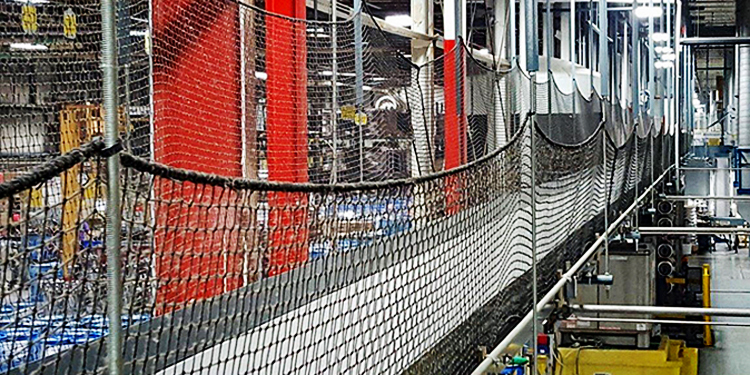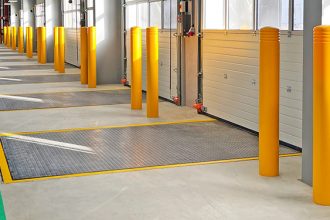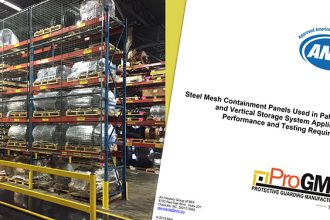How To Select The Right Type Of Protective Guard Netting For A Specific Application

Protective guard netting (also called “overhead guarding” and “safety netting”) improves the safety of personnel and pedestrians in distribution centers, warehouses, and manufacturing facilities by preventing items from falling from heights. When properly installed, the netting retains products, totes, cases, boxes or pallets from falling off the back or sides of industrial steel storage rack; through the openings in guardrails positioned around the perimeter of mezzanines, elevated work platforms, pick modules or stairs; or from any conveyor. It can also be used to protect personnel from coming in to contact with mechanical or automated equipment while still providing visibility to the system’s operation.
There are a variety of protective guard netting options. These include different construction materials (nylon, polyester, polypropylene, or polyethylene); thicknesses; tensile strengths; opening sizes; load ratings; and more. To help facility owners choose the right solution for their unique application, it’s important to work with a qualified supplier. They will specify the most appropriate netting for an application based on the answers to the following questions:
- With what equipment will the protective guard netting be used? Knowing the intended use of the netting will help to determine the most appropriate type, material, thickness and opening size. It will also aid in the selection of the type of fastener to be used, such as connectors provided by the supplier, industrial zip ties, snap-hooks, carabiners, or a cable system to accommodate for pallet offset.
- What are the dimensions of the area where protective guard netting is required? The available space in the area requiring protection will impact the design and construction of the overall solution. Netting made of woven nylon or polyester materials will have a bound edge to increase the overall strength of the net and provide a point of attachment. Therefore, it is most often supplied in a custom size to meet the unique application’s dimensions. Extruded polypropylene or polyethylene netting can be delivered in pre-cut dimensions or as a continuous roll of material that is trimmed on-site to match the required size during installation.
- What are the characteristics or types of items with which the protective guard netting might come into contact? Minimum and maximum weight, dimensions, materials, and shapes are all factors in determining the most appropriate netting material and installation solution. Additionally, it is important to share details about items that are sharp, abrasive, irregularly shaped, or contain hazardous materials. Certain types of netting can be more easily “patched” if they are torn or cut; others are more difficult to repair if compromised.
- In what type of environment will the protective guard netting be installed? Different types of netting material may be more ideally suited for indoor, outdoor and clean room environments, as well as in temperature conditions including ambient, cold storage, freezers, or extreme heat. Temperature and other environmental factors can affect the energy absorption and tensile strength properties of different netting materials.
Looking for more information about protective guard netting? Check out the two categories dedicated to this guarding solution in the Protective Guarding Search Tool, published by the members of the Protective Guarding Manufacturers Association (ProGMA): Overhead Mesh Guarding and Safety Netting.



